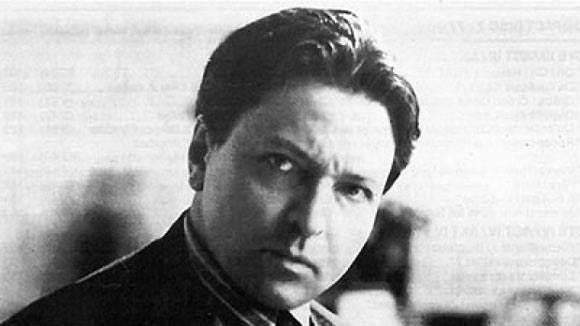
George Enescu was a Romanian Composer, Pianist, Violinist and Conductor. He is remembered as one of the true leading authorities of music in Romania, and as one of the most important composers of the twentieth century.
George Enescu was born on August 19, 1881 in Dorohoi County (presently Botosani County), Romania. It was said that he was given a violin at the age of four and that he progressed rapidly at his lessons. At the age of five and a half, Enescu was already composing. At the age of five, he was a well known child prodigy in Romania. He wrote “Pamint romanesc” (Romanian Land) during this time. Due to his magnificent skill and dexterity, in 1888, at the tender age of seven, he became the youngest composer ever to study at the celebrated Vienna Conservatory. There, the young Enescu studied the violin with the Austrian Composer Joseph Hellmesberger Jr. He also studied with Robert Fuchs and Sigismund Bachrich.
While still studying at the conservatory, Enescu played before the Austrian Emperor, Franz Joseph, at the Court of Vienna. Enescu became a silver medal graduate at the age of twelve. He then chose to continue his studies at the Conservatoire de Paris, where he took lessons for the violin with Martin Pierre Marsick. Paris also housed Enescu for his harmony lessons with Andre Gedalge, and his composition lessons from Jules Massenet. During this time, Enescu was developing a taste for the music of Johannes Brahms, Felix Mendelssohn, and Pablo de Sarasate.
At the age of sixteen, one of Enescu’s works, his “Poema Romana”, was played by the Colonne Orchestra; an Orchestra that was regarded to be one of the best in the world at that time. In 1901, he wrote two operas, both titled “Roman Rhapsodies”, which became extremely popular. In 1936, his opera composition “Œdipe”, was also mightily popular. Enescu also had a prosperous career in conducting. In the United States, he conducted many concerts for the New York Philharmonic and the Philadelphia Orchestra, among many others. He also conducted the Orchestre Symphonique de Paris for almost a year in 1935. As a teacher, Enescu is credited with teaching the legendary Yehudi Menuhin, the elaborate Christian Ferras and the adventurous Ivry Gitlis. Other notable students included Arthur Grumiaux, Ida Haendel and Joan Field.
Enescu was credited with writing three symphonies and also three orchestral suites. He was also known for his three exquisite Violin Sonatas. Enescu also wrote a number of Piano Quintets and Quartets, as well as Cello Sonatas and String Octets. He also wrote a number of songs, which included “Trois Melodies”, “Sept Chansons de Clement Marot”, and “Trois Melodies sur poems de Fernand Gregh”.
Few would debate Enescu’s grand stature in composition. He earned the praise and appreciation of several esteemed personalities, including the Queen of Romania. Even though he was mostly recognized as a violinist, Alfred Cortot, a grand piano virtuoso, stated that Enescu’s piano technique was better than his own. Enescu was also praised for his extraordinary memory, it was said that he could reconstruct almost all of Beethoven’s works from memory alone.
George Enescu died on May 4, 1955 in Paris, France. He was struggling from arthritis, and in 1954, he suffered a stroke which left him paralyzed.